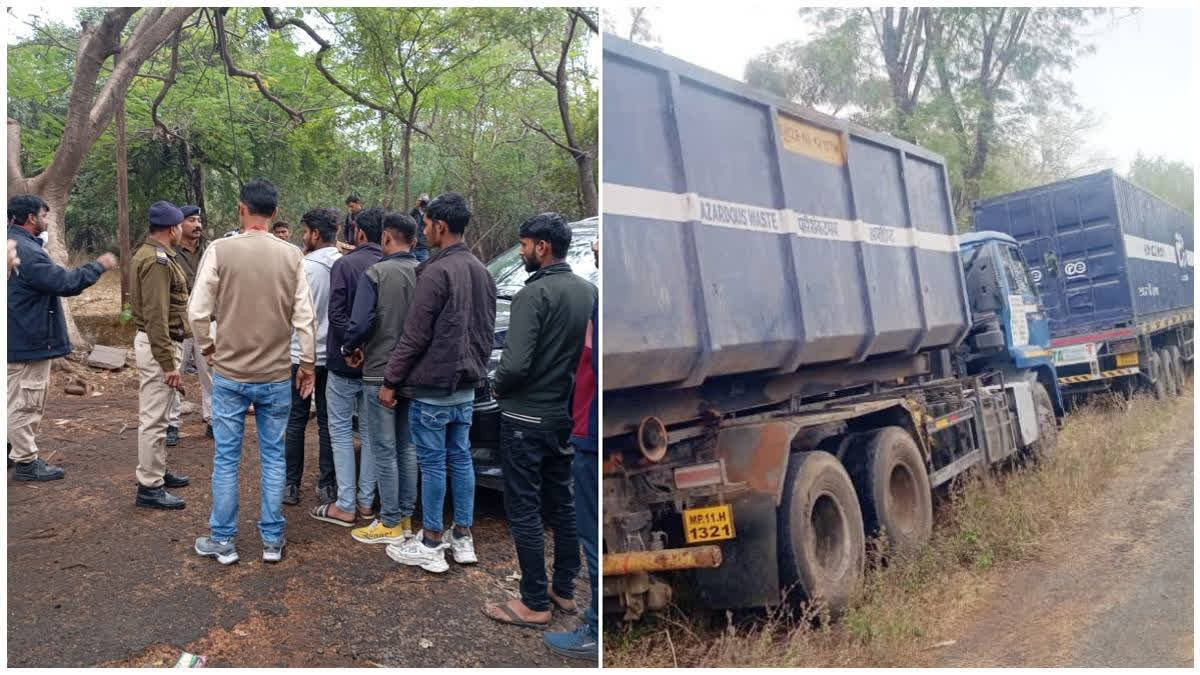Bhopal: The process of removing toxic waste from the Union Carbide and Dow Chemical factories in Bhopal has begun. The waste, currently buried on the factory premises, has been causing serious environmental and health concerns in nearby localities, including JP Nagar, Atal Ayub Nagar and Odia Basti, with a population of over one lakh people. The toxic waste, estimated to weigh about 337 metric tonnes, has led to the contamination of groundwater and surrounding environments. To address this, the government has allocated Rs 126 crore for the removal process.
A Green Corridor will be established between Bhopal and Indore to facilitate the safe transportation of the waste. The waste will be transported to the Industrial Waste Management Company Ramky Environ in Pithampur, Indore, where it will be incinerated. Special trucks with unique numbers are being used to transport the waste, ensuring smooth movement without traffic interference. A separate route will be designated for this operation and 400 police and administrative personnel will be deployed for security and coordination.
Toxic waste is being loaded into 12 container trucks under the supervision of experts from Ramky Enviro Company. The operation is being conducted with tight security and the presence of over 400 officers from various departments, including the district administration, municipal corporation, health department and Pollution Control Board.
Swatantra Kumar Singh, Director of Bhopal Gas Tragedy Relief and Rehabilitation, said, "The waste will be transported from Bhopal to Pithampur following the High Court's guidelines. The entire process is being carried out under the direction of the High Court. An affidavit must be submitted to the High Court by January 3, 2024. Therefore, the waste removal process will be completed before that date. After the waste is delivered to Pithampur, it must be incinerated within nine months."
Opposition to Burning of Toxic Waste in Indore
Meanwhile, the Congress party is protesting the decision to burn the toxic waste in Pithampur. Under the leadership of state president Jeetu Patwari, a memorandum was submitted during a sit-in organised by MLAs from Dhar district. Patwari expressed concerns that burning the waste in Pithampur could lead to a spike in cancer cases in the area and cause contamination of water sources. He warned that the poisonous water could eventually reach the Yashwant Sagar Dam, which supplies water to Indore, resulting in the spread of serious diseases.
Madhya Pradesh High Court's Order
The Madhya Pradesh High Court has ordered that the toxic waste from the Union Carbide factory be removed within four weeks. A large number of police forces have been deployed for this operation, with the Divisional Commissioners of Bhopal and Indore responsible for managing traffic along the designated route. The trucks will travel via Karond Mandi, People’s Mall, Karod Chauraha, Gandhi Nagar and Mubarakpur Sehore Naka, ensuring minimal traffic disruption at night.
Health Precautions for Workers
The workers loading the toxic waste have been provided with full protective gear, including PPE kits and masks, to ensure their safety. A team of doctors has also been stationed on-site to monitor the workers' health and provide immediate medical assistance if needed.
Bhopal Gas Tragedy: A Deadly Industrial Disaster
The Bhopal Gas Tragedy occurred on the night of December 2-3, 1984, when a gas leak at the Union Carbide India Limited (UCIL) pesticide plant in Bhopal, Madhya Pradesh, released methyl isocyanate (MIC) gas and other toxic chemicals into the atmosphere. It is considered one of the worst industrial disasters in history.
The leak exposed over 5,00,000 people to the toxic gas, resulting in immediate deaths and long-term health issues. The official death toll varies, but it is estimated that 2,500 to 3,000 people died within the first few days. Over time, thousands more have died or suffered chronic health conditions such as respiratory issues, blindness and neurological disorders. The disaster caused widespread panic, with residents fleeing their homes, and led to lasting environmental damage, including the contamination of soil and water sources in the area.



